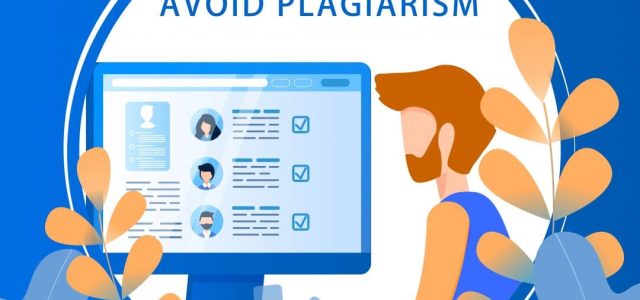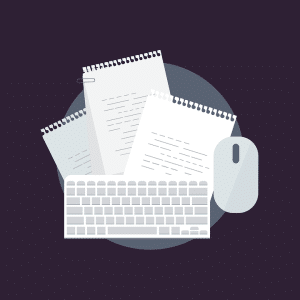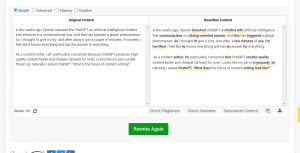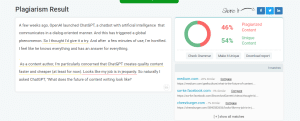Plagiarism is a grievous sin capable of death sentence, As a student, how can you avoid plagiarism in your academic writing?
If we put it simply, plagiarism means duplication of content. If you copy someone else’s work and post it as your own, then this means that your content is plagiarized.
In this article, we are going to focus on plagiarism in academic writing. These include assignments, essays, case studies, etc.
Committing plagiarism is a very common practice among students. A study online revealed that at least 68% of students have plagiarized.
However, fortunately, modern technology and tools are able to detect plagiarism fairly easily. That’s why students can no longer easily get away with copying content.
Also, sometimes plagiarism can be incidental or unintentional. Similarly, there are other types of plagiarism as well. We will share some tips and tricks to help you avoid all the different types of plagiarism.
How Students Can Avoid Plagiarism in Academic Writing
Below are ways students can curb plagiarism in their academic writing.
1. Understand Plagiarism Types and Consequences
As mentioned before, plagiarism is of more than one type. All of these types are unacceptable and will be considered cheating by your professors or assignment checkers. Some of the most common types of plagiarism include:
Accidental Plagiarism
This happens when you unintentionally write something that completely matches someone else’s already published work. This is a common error, but for plagiarism detectors, it doesn’t matter if it was accidental or not. That’s why it is compulsory to remove such plagiarism.
Direct Plagiarism
This is the act of completely copying something from an online source and submitting it as your own. This can be detected very easily and is highly discouraged.
Self-Plagiarism
This occurs when you accidentally reuse your old content in an assignment. This is also considered plagiarism because it doesn’t matter to plagiarism-detecting software if the author of the matching text is the same.
Mosaic Plagiarism or Patchwork Plagiarism
This is a type of plagiarism in which you only plagiarize several parts of a text or copy content from different sources to make it difficult to detect. However, it can also be detected fairly easily and can get you into trouble.
All of these types of plagiarism are strongly prohibited. If any of these is detected in your academic writing, then your teacher will not accept it. Then, you will either have to write it all again or lose marks for that writing.
That’s why you should never cheat on your assignments. You should perform adequate research on the given topic and then write about it yourself.
- Read Also: Relevance of AI in Education
2. Learn Citation Techniques and Styles
Citation is a process in which you credit the original author for certain information that you have used in your own writing. For example, let’s suppose you are writing about animal behaviour. Now you want to share the results of a study
about animal behaviour that was performed and published online by someone else. To do so, you will have to give a link to the original source. This is the proper way of citation.
There are different types of citation styles. Some of them include:
- APA(American Psychological Association) Style
- Chicago/Turabian Style
- MLA (Modern Language Association) Style
These styles are used for specific types of content. For example, the Chicago style is usually used in business-related and historical content. If you want to learn more about these styles, click here.
It is imperative to cite a source properly because if you don’t, then it can be considered plagiarism.
Other than knowing about these citation styles, you should also be aware of some common mistakes that people make while citing a source. Here is an example of a correct and incorrect citation.
Let’s say you have shared a statistic about motorcycles and traffic collisions. You found it from an online source. Here is how some people might cite the source:
Incorrect: Source: https://www.moneygeek.com/
Whereas the correct way of citation is to give the link that takes you to the exact page where the statistics are given.
Correct: Source: money geek
Since the link was too lengthy to share, we used a hyperlink to keep things tidy.
3. Develop Research and Note Taking Skills
Many students just want an easy way out of completing academic assignments. That’s why they try to use different techniques of copying content from other sources and end up creating plagiarized content. This is not how online sources should be utilized.
If you want to avoid plagiarism, then you should perform research with the help of sources on the internet and take notes. When you read about a topic from different sources, then you get familiar with different perspectives. In this way, you can write by yourself by using information from all these sources.
One great way of performing research is to note down important points as you go through different sources. If you do so, then by the end of your research process, you will have a sort of outline of all the points that you will discuss in your writing.
Once you have this outline of important points, you can explain all of them in your own wording and completely avoid plagiarism.
You should keep following this pattern of research and note-taking. In this way, you can develop skills that can help you reduce the time you spend researching.
By frequent research, you can easily avoid plagiarism in your academic writing
4. Rewrite the Plagiarized Content
One great way of removing plagiarism from your writing is to rewrite it. You don’t necessarily need to rewrite it completely. Instead, you can just rewrite the plagiarized sections that you can detect with the help of plagiarism checkers. We will discuss these plagiarism checkers a little later in this article.
Rewriting or rewording a sentence can very efficiently remove plagiarism from a piece of text. If that does not work, you can completely remove the plagiarized sections and try to summarize your writing.
However, sometimes you may not have the time to find out all the plagiarized sections and then rewrite them separately. In such a situation, you can take help from an online article spinner. It is a tool that can rewrite articles. This rewritten article is very likely to be unique and free of plagiarism.
To show you how an article rewriting tool works, we inserted an already-published article into the tool to see if it can remove plagiarism from it or not. The results of the article rewriting process are given below:
After this, we checked how much percentage of plagiarism this passage has.
As you can see, even a completely plagiarized piece of text was rewritten in such a way that it is now considered 54% original. In this way, you can use article rewriters to reduce the amount of plagiarism in a text.
5. Use Quotation Marks for Direct Quotes
Quotations or sayings need to be written in the exact same wording. That’s why plagiarism checkers might consider them unoriginal. However, if you put punctuation marks around such quotations, and mention the author, then it will not be considered as copied.
That’s why it is necessary to use quotation marks properly. To further elaborate on this point, here is an example of what is the correct way of quoting something:
Incorrect: To be, or not to be: that is the question.
Correct: “To be, or not to be: that is the question.”
-William Shakespeare
So, make sure that you don’t use someone else’s saying or quote without quotation marks or without mentioning their name.
6. Use Plagiarism Detection Tools
Plagiarism detection tools are available online that can be used to see if your writing has copied content or not. These can help you find out unoriginal parts of your writing. Once you know about them, you can modify them to reduce plagiarism.
These tools usually have the same working. First, you have to copy and paste your writing into the tool. Some tools also give the option to upload documents. After that, you have to click on the button given underneath the tool.
Once you do that, the tool will search the web to find out if there are any online sources that have the same content as yours. Once that is done, the tool will give you a report that will tell you if your content is plagiarized or not.
7. Cultivate a Unique Writing Style
Writing style can be helpful in avoiding plagiarism. An ideal writing style can consist of elements such as,
- Short Paragraphs
- Simple Words
- Readable Sentences
- Correct Grammar
Other than these, you can use specific tones of writing. For example, an autobiography can have a little bit of humour and a friendly kind of tone in it. At the same time, a case study should be professional and have a formal style.
With a little bit of trial and error, you can cultivate a writing style that is unique only to you. Once that happens, the chances of your writing having plagiarism will become very low. So, try not to copy other people’s writing style but make one of your own.
8. Uphold Academic Integrity and Originality in Writing
This last point is about being moral and honest. Being a part of an academic or educational institution, it is your duty to be truthful in your work. By copying someone else’s work, you break all the moral codes and rules that are a part of your academic integrity.
That’s why you should never commit plagiarism in your academic writing. Complete your task with the utmost honesty, and then embrace whatever results you get. It is better to fail but stay honest than to pass by cheating.
Read Also:
Websites To Get Educational Materials
UK Nursing Agencies in Nigeria
Conclusion: Avoid Plagiarism in Academic Writing
Plagiarism is a very foul act and should be avoided at all costs. It can be intentional, or it can be accidental. Regardless, it should be removed from your work.
This article has a large number of techniques that you can follow to avoid all types of plagiarism in your academic writing. If you use these techniques and remove plagiarism from your academic writing, then it is possible that you become more trustworthy in the eyes of your superiors, such as professors.
- CAC Accredited Agent Registration 2025: Online Requirements - January 15, 2024
- Best Coding Schools in Lagos 2025 - October 23, 2023
- How AI Technology Plays a Role in Education & Business - August 25, 2023







Hi,
I won’t go into much detail because I know you probably receive tons of emails every day.
I am aware that you write some fantastic posts on these subjects.
I’m working on a lengthy, well researched, and data-driven blog post that is relevant to your subject and might make a terrific addition to your website.
I’ll be pleased to create stuff that has been well studied and is backed up by facts.
Please let me know your thoughts. I’m forward to hear from you again!
Thanks
Send me a mail